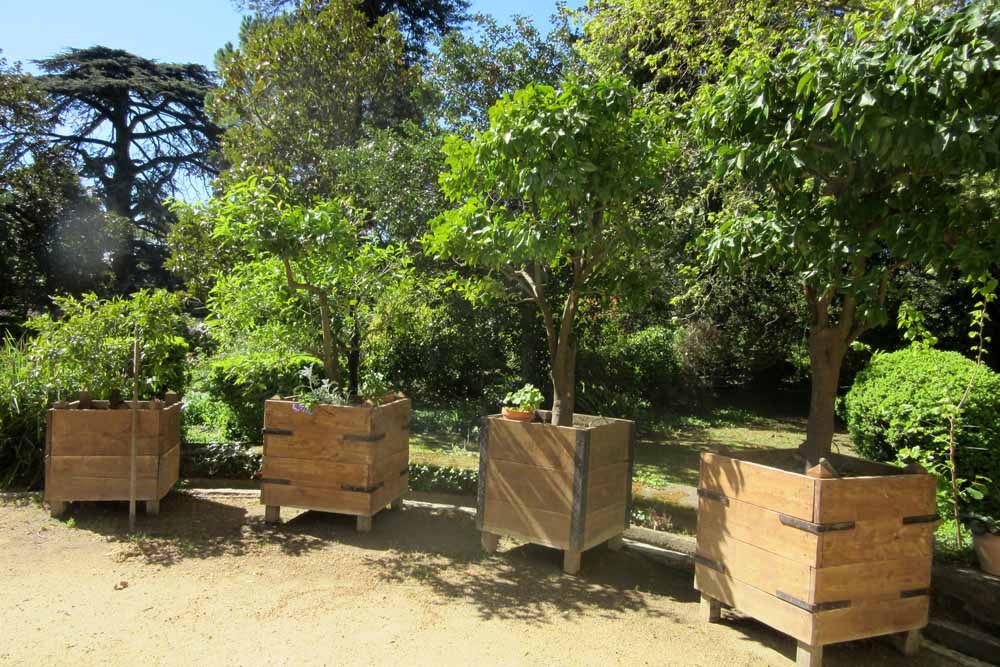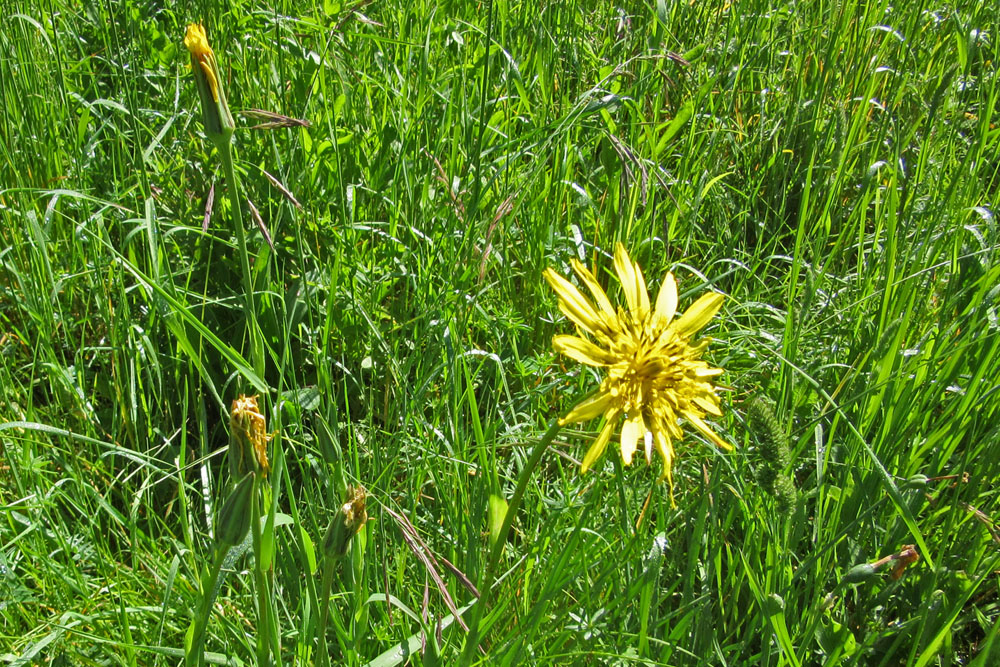April / avril 2016
A Visit to Les Roches, in Orange, and a walk in the Espace Botanique de Coste de Coa
Click on an image to enlarge it / Cliquez sur une image pour l’agrandir
The glories of Les Roches are its trees and its proprietor, the charming Chantal Morin-Falque who received us, showed us round, and lavished her hospitality on us.
The entrance is down a driveway arched over by the most venerable plane trees. The garden is centred round a magnificent Cedar of Lebanon (Cedrus libani subsp. libani) brought back from Lebanon in the hat of the botanist, Antoine Laurent de Jussieu, and planted in 1732. This tree, the first Cedar of Lebanon planted in France, grows majestically opposite the house, with a pond with a natural spring at its feet.
A half circle of bamboo grows behind the cedar and on all sides, trees and bushes pay homage to it. Notably, a palm tree beside the pond, a large magnolia in front, a holly tree, further out two interestingly twisted Sophora japonica, a number of lagerstroemia and an ancient campsis growing over a pergola. To the west there is a stand of hazel bushes and to the east a field bordered by a hedge of Judas trees (Cercis siliquastrum), which were in flower. Nearer the house are box and most impressive pink tree peonies.
On either side of a path leading from the house to the cedar, there is a flower border and beside the house there are many lemon trees in pots, looking very healthy; they have been taken into the greenhouse for the winter and taken out again each spring for maybe two hundred years. There are two enormous plane trees flanking the house, which though much older, has a facade dating from 1870. As we walked around the wild field, the talk was about a tragopogon, in the north of England known as Jack-go-to-bed-at-noon, which we erroneously identified as salsify (their flowers are lilac). Our yellow tragopogon, T. pratensis, also closed its flowers at noon.
The garden is under threat from the town planners of Orange. They want to oblige Chantal to cut down the plane trees. The spring, which fed a network of channels, has been blocked by the city. The garden has great charm and a long history, we hope Chantal will be able to save her plane trees. We had a delightful picnic in the shade of one of them.
After lunch we drove to Vacqueyras to walk along some of the trails in the Espace Botanique de Coste de Coa, led by Babeth Tomlinson, Chantal’s cousin. It is a lovely site on a promontory, looking out over vineyards to Mont Ventoux and the Dentelles de Montmirail. Although a lot of the name panels were missing, we had fun identifying plants with the help of communally informed guesses, backed up by books. The terrain is garrigue, with open areas between patches of forest, and all the plants were Mediterranean. It was a pleasure to be strolling in warm sunshine accompanied by many varieties of butterfly.
One of the paths was called Kermès, and there were a lot of Kermès oaks, along with, cade, Juniperus oxycedrus (including one very old tree with no fruit while the young ones all carried fruit), Crataegus monogyna, Viburnum tinus, Amelanchier ovalis and many others. In the open areas, interspersed with wild thyme in profusion, we found Cistus albidus in flower, a white-flowered cistus that may have been C. creticus, or C. Salvifolius or a hybrid, and yellow Ginesta scorpius.
Amongst the grass were a lot of Ophrys sphegodes (Spider Orchids) and early Barlia robertiana, now past their prime. We also found a beautiful Orchis purpurea, the diminutive gold and brown Ophrys lutea and last of all, a tall exotic looking orchid new to many of us, identified as Limodorum abortivum, hiding in the shade of conifers.
Other finds included two parasitic Orobanche (Broomrape), Muscari comosum (Tassel Hyacinths), wild asparagus and Ornithogalum umbellatum (Star of Bethlehem), called ‘Dames de Onze Heures’ in French because that is the time of day they open their flowers.
Text: Katharine Fedden and Hilary Ivey
Photographs: Hilary Ivey, Sara Robinson, Christine Daniels and Ian Davis
![]()



















